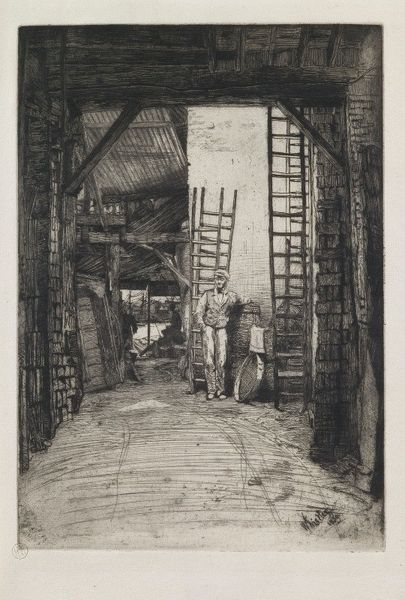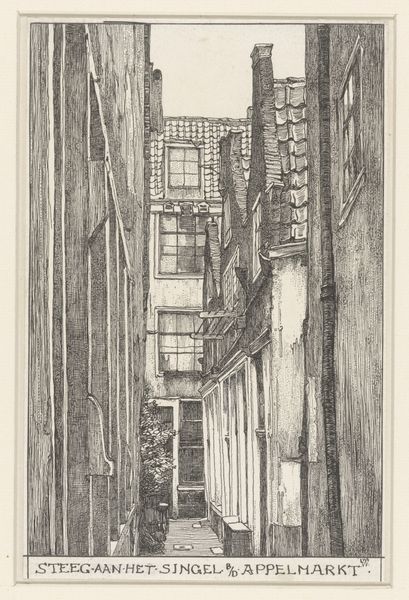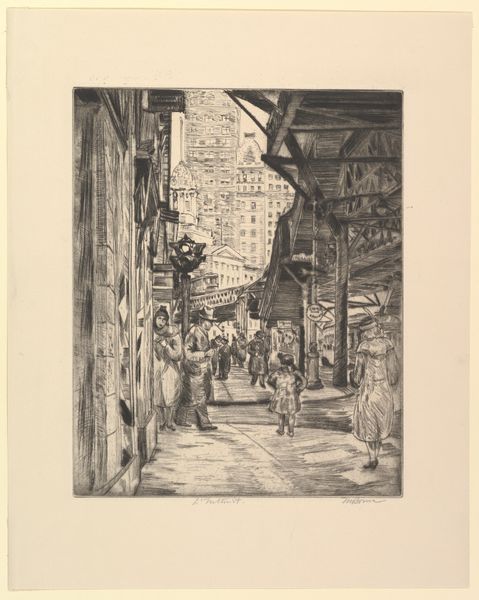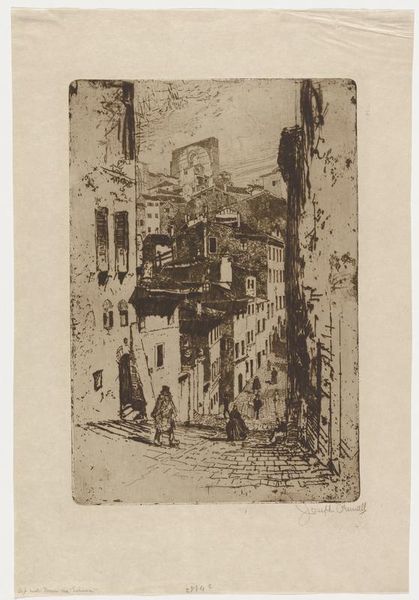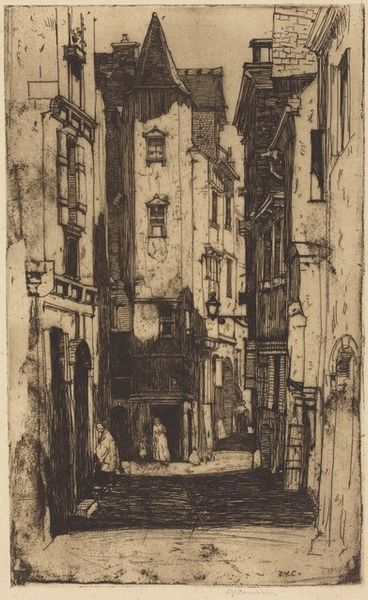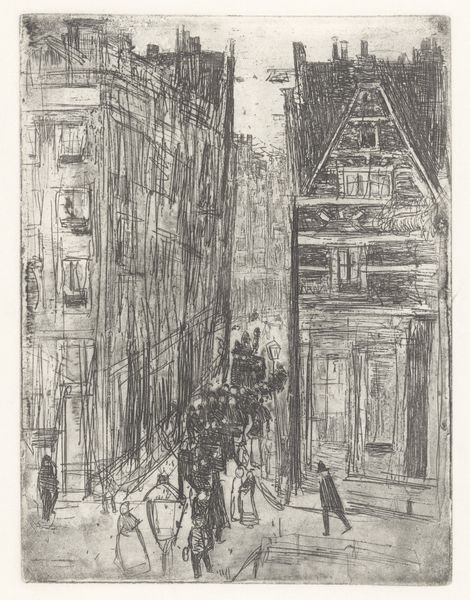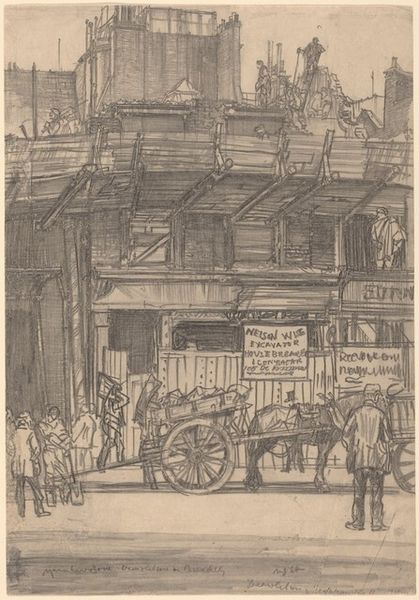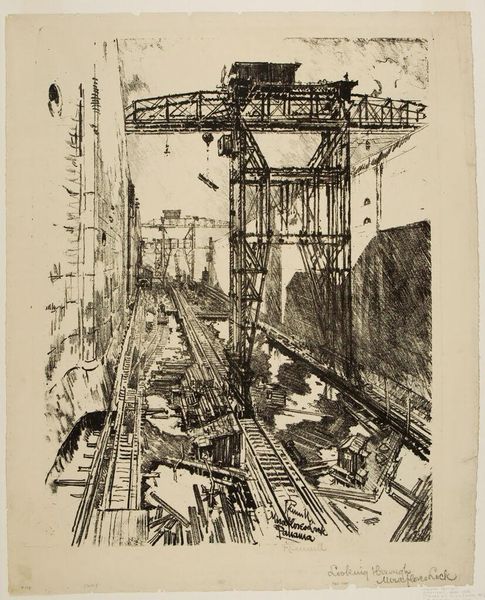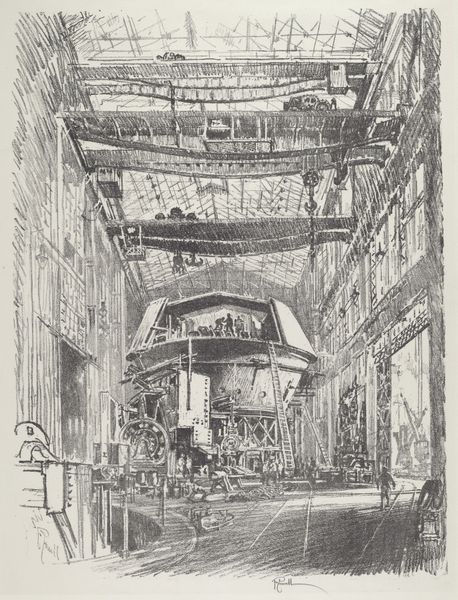
print, etching
# print
#
etching
#
cityscape
#
genre-painting
#
realism
Dimensions: plate: 19.05 × 12.38 cm (7 1/2 × 4 7/8 in.) sheet: 33.02 × 21.59 cm (13 × 8 1/2 in.)
Copyright: National Gallery of Art: CC0 1.0
Curator: Looking at "Gateway in the Ghetto, Paris" by Samuel Chamberlain, an etching from 1930, I am immediately struck by how the strong diagonal shadows cut across the architecture. What do you make of it? Editor: The heavy shadows really contribute to the piece's somber, almost oppressive mood. They delineate space but also seem to trap the inhabitants, adding a layer of social commentary, don't you think? This image from Paris might signify a kind of border, separating inside and outside the Ghetto’s symbolic perimeter, so who is kept out or kept in becomes the central interrogation. Curator: Yes, indeed. Chamberlain completed much of his work while living in Europe and on his return to the United States he became known for prints like these, documenting cityscapes, particularly architectural subjects like this, as well as genre painting. I find myself drawn to the details; the figures near us become a portal into a liminal area. Editor: Absolutely. Consider the semiotics of the street advertisements and architectural context, they invite us to decode power dynamics and ask ourselves "what narratives were visible within that community?" Realism, here, can act as a method of conveying hidden truths—as it does when it sheds light on these ordinary but powerful scenes. The etching becomes more than just the scene, but instead a kind of intersectional cultural text, speaking volumes on social-political issues during that time. Curator: Thinking about it further, this image of working-class neighborhoods helps us remember art history also reflects larger narratives around migration, the evolution of community boundaries, and class structures, wouldn't you agree? These prints help expand art historical research by providing intimate access into diverse subjects and moments, allowing for the reexamination of how those socio-political environments are framed. Editor: Definitely! We need art and artifacts like "Gateway in the Ghetto, Paris" to broaden the discussions on inclusivity and cultural exchange in a city like Paris during the 1930s and challenge existing art historical canons. By reflecting on the historical context alongside contemporary theoretical perspectives, these images allow a modern observer to really reconsider and interpret their meanings. Curator: I completely agree. Samuel Chamberlain's rendering of Parisian life goes far beyond a simple visual document; the scene and perspective prompts us to consider socio-political layers reflected in it. Editor: It leaves me questioning the position of those at the gateway – poised between worlds, their gaze internalized in shared solidarity; it also questions my own, both then and now, as a privileged outsider.
Comments
No comments
Be the first to comment and join the conversation on the ultimate creative platform.


